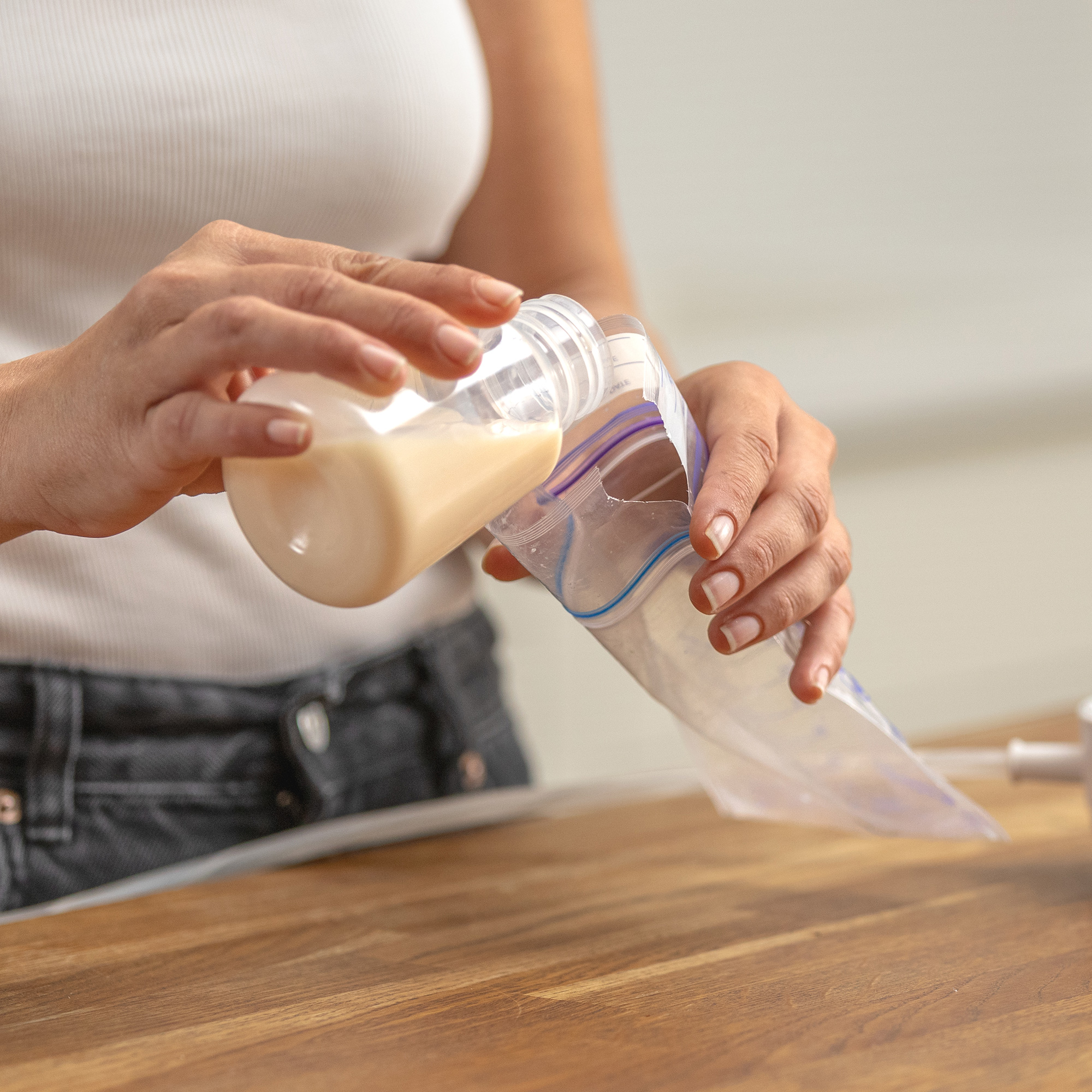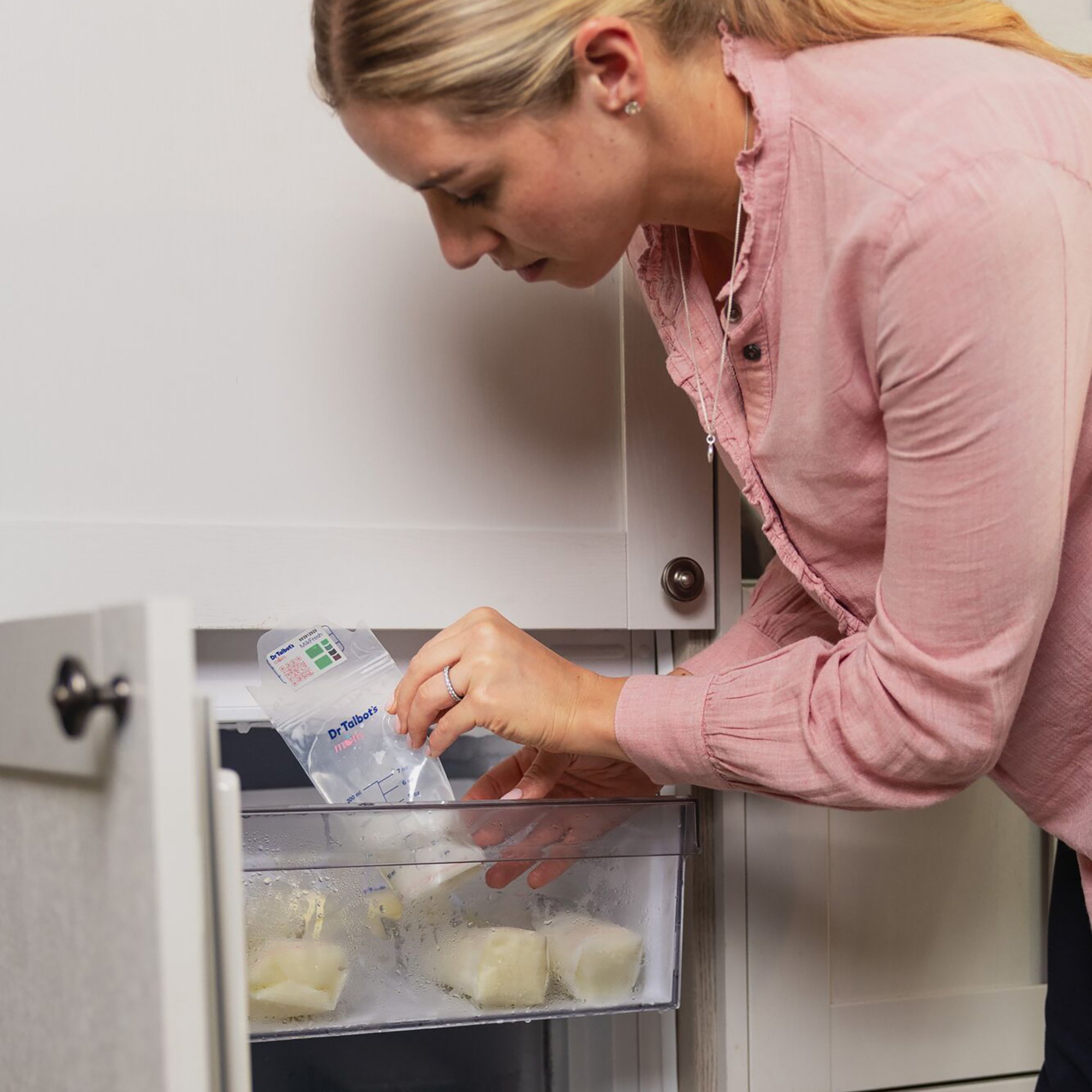Proper breast milk storage ensures its quality, maintains its nutritional value, and makes it safe for the baby to consume.
This detailed guide on breast milk storage will walk you through the best practices for storing breast milk.
Why Proper Breast Milk Storage Matters
Improperly stored breast milk can lose its properties as well as nutritional value. More importantly, it can become a health hazard for your baby because of bacteria growth. If it comes to that, breast milk needs to be thrown away.
Proper storage of breast milk is crucial to prevent bacteria growth. Not only will spoilage be less likely to happen, but so will the inconvenience of running out of breast milk.

Breast Milk Storage Guidelines for Different Temperatures
The amount of time breast milk can be used depends on its storage location:
Room Temperature (Up to 77°F or 25°C): Use fresh breast milk within 4 hours. If you previously thawed the milk, use it within an hour or two. Leftover milk from previous feedings should also be used within two hours.
Refrigerator (Up to 40°F or 4°C): Fresh breast milk can be stored in the refrigerator for up to 4 days after expression. If thawed, use it within a day (24 hours). If leftover, use it up in two hours.
Freezer (0°F or -18°C or below): Fresh milk is best if used within 6 months of freezing. After that, some of the nutrient values drop. However, storing it for up to 12 months is still acceptable. Previously frozen breast milk should never be refrozen. Thawed leftover milk, however, can still be used within two hours.
How to Store Breast Milk Safely
To safely store breast milk, remember always to use sterile food-grade containers that are BPA-free. Another option is to use storage bags for breast milk. Never fill the containers to the brim. Breast milk expands when frozen; always ensure the containers are well sealed.
Label the milk container with the date and time of expression before storing it, or use a MilkFresh sensor. That way, you ensure the oldest milk gets used up first. This will not only prevent milk spoilage but also guarantee milk quality.
Store breast milk in the back of the refrigerator or freezer, away from the door, to maintain a consistent temperature and minimize the risk of spoilage.

How to Handle Breast Milk Before Storage
Maintain sterility to prevent breast milk from being compromised before storage. Always wash your hands before and after expressing milk. If you’re pumping, make sure your pumping equipment is clean thoroughly.
Always use a sterile container for breast milk storage.
Before adding fresh milk to cooled or frozen milk, allow it to cool down, and remember the milk storage temperature guidelines.
Tips for Freezing and Thawing Breast Milk
It is best to store breast milk in small portions (2 to 4 ounces). This approach helps prevent waste and makes thawing quicker and more efficient.
Never fill the milk container to the brim. This allows the milk some room to expand when freezing.
When storing breast milk in storage bags, lay it flat. This will save space and ensure that the milk is evenly frozen and easy to thaw.
The best way to defrost frozen milk is using the refrigerator method. This involves placing the frozen milk in the refrigerator to thaw gradually over 12 to 24 hours.
If you're in a hurry, you can use the warm water method. This involves placing the sealed milk container in a bowl of warm water (not hot) for 10-20 minutes.
Alternatively, the warm running water method involves holding the sealed container under lukewarm running water for 5-10 minutes.
What to Avoid in Breast Milk Storage
An important thing to avoid with breast milk storage is refreezing already thawed milk. Thawed milk should never be refrozen. Not only does refreezing breast milk lead to nutritional loss, but it also creates perfect conditions for bacteria growth and contamination.
Always use food-grade containers that are BPA-free and sterile or breast milk storage bags. Refrain from using regular plastic bags and containers not designed for breast milk.
When combining fresh milk with already cooled or frozen milk, it is important to always cool it to the same temperature before mixing.
FAQ’s
How long can breast milk stay fresh in the refrigerator?
Breast milk can stay fresh in the refrigerator for up to 4 days. Once thawed and refrigerator-stored, it should be used within 24 hours.
Can I store breast milk at room temperature overnight?
Do not store breast milk at room temperature overnight. It should only be stored for up to 4 hours.
How should I label breast milk storage bags?
Label breast milk storage bags with the date and time of expression or apply a MilkFresh sensor to log the details automatically, track the freshness and ensure the oldest breast milk is used up first with an optimized inventory system.
Is it safe to refreeze breast milk after thawing?
Never refreeze thawed breast milk, which could lead to contamination and bacteria growth. Refrozen breast milk also loses its nutritional value and other benefits.
Can I mix freshly pumped milk with refrigerated milk?
You can mix fresh breast milk with the already refrigerated milk, but make sure to cool down the fresh milk to the temperature of the refrigerated milk.
Conclusion
This breast milk storage guide emphasizes the importance of proper storage for maintaining the highest quality and nutritional value of your milk. The storage temperature directly influences the length of time your milk remains safe to use.
Proper storage also includes using appropriate containers. Sterile, food-grade containers are essential. Storing milk in smaller portions is recommended. Always label each container with the date and time of expression. We recommend you apply a MilkFresh sensor to each container to have all the details automatically logged and the freshness tracked in real time. Place the containers in the back where temperatures are most stable for refrigerator and freezer storage.
Crucially, never refreeze previously thawed milk.